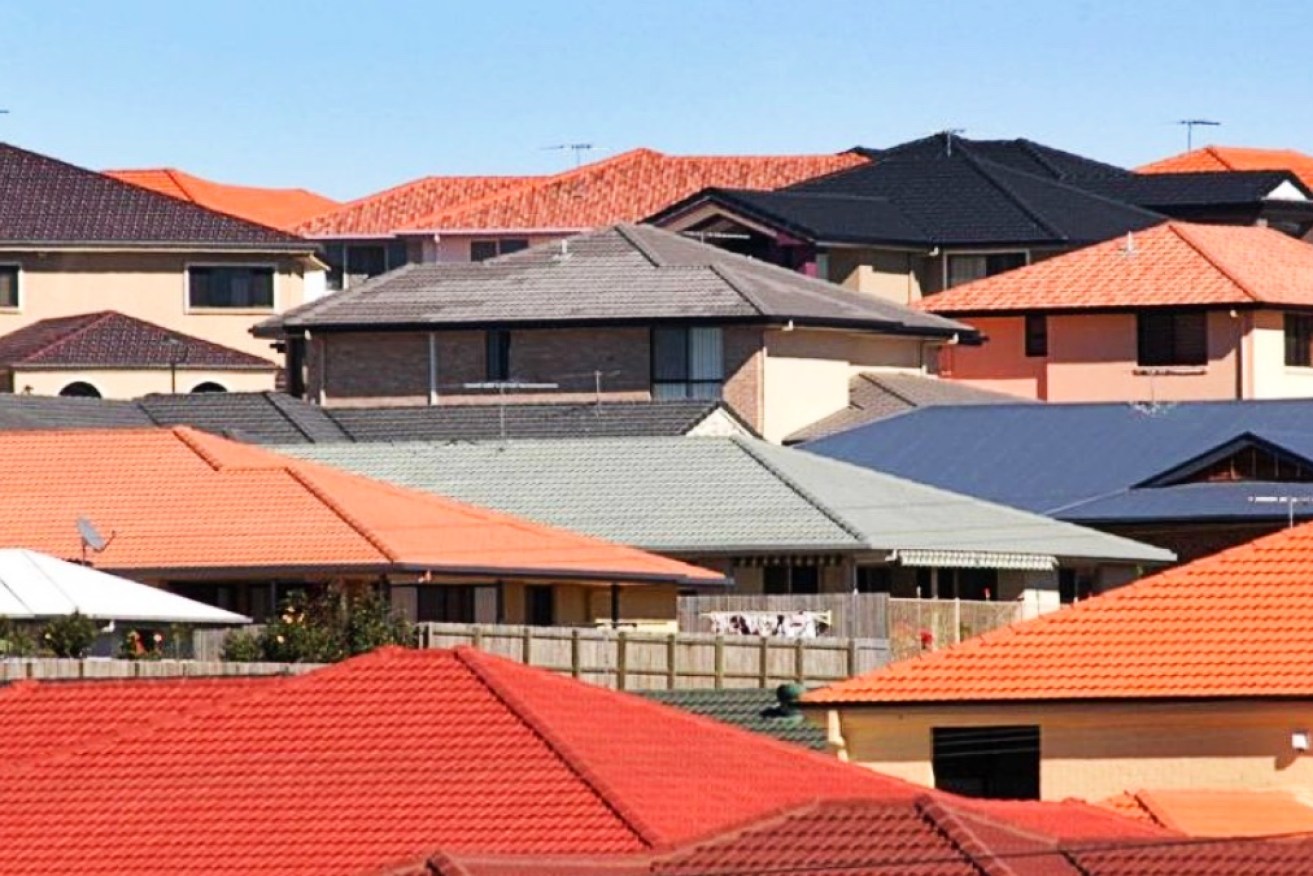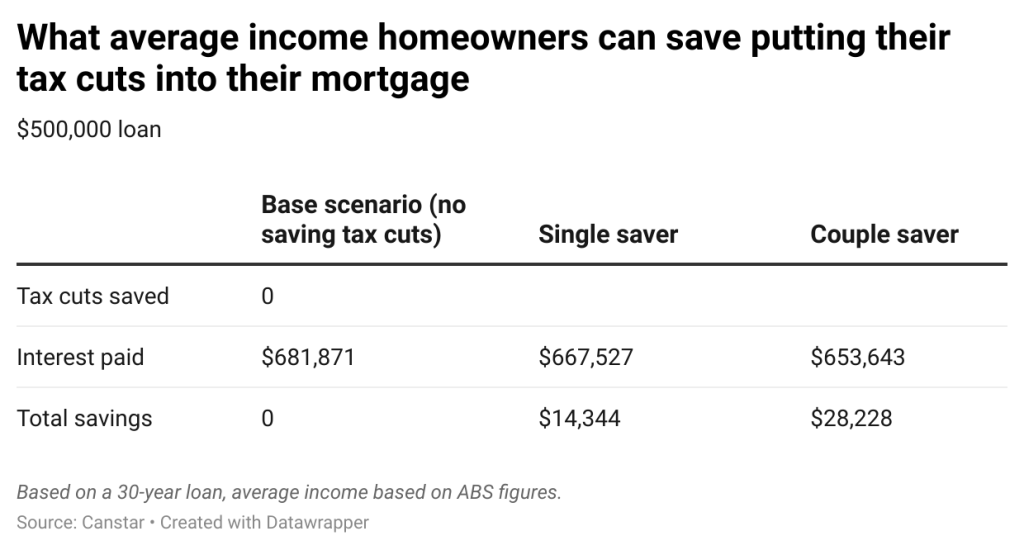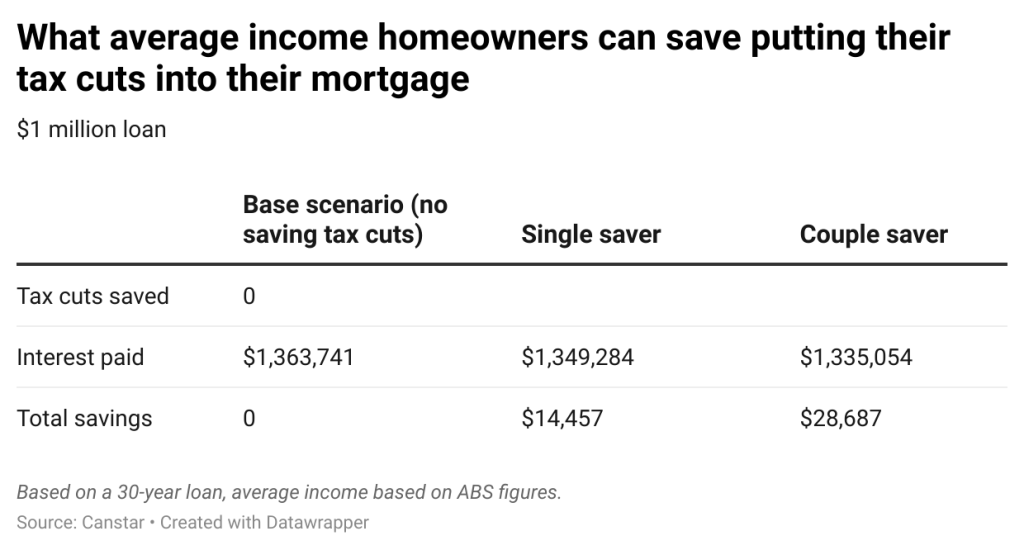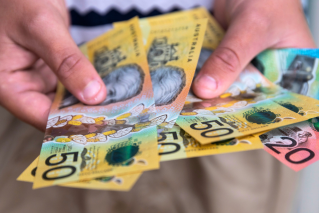‘Putting it to good use’: How the tax cut can shave thousands off your mortgage or other debt


Putting your tax savings into your mortgage could save you big time in the long run, new data shows. Photo: AAP
Australians are being urged to make the most of their stage-three tax cut windfall by paying down debt, with analysis revealing tens of thousands in savings from putting it into a mortgage.
On Monday millions of Australian taxpayers began saving upwards of $2000 a year on their tax bills, which will mean a welcome boost in worker incomes as soon as they receive their next pay slip.
But financial adviser and Insufficient Funds author James Millard said those wanting to make the most out of the tax cuts will want to consider how they can make the windfall go furthest.
“You’re essentially getting a pay rise here,” Millard said.
“If you can save a good chunk of that additional tax saving, then you’re putting it to good use.”
The latest analysis from Canstar shows a single worker on an average income who is paying down a $500,000, 30-year mortgage could save $17,500 directing their windfall into their loan.
An average couple could save $1777 by using their entire tax cut to cut into their home debt.
Canstar’s Steve Mickenbecker said making the tax cut deliver additional savings is something households can do right away, particularly for those with access to redraw and offset accounts.
“Make sure you stop and take notice,” he said.
“You’re getting $2000 more back than what you’ve had before, what can you do with it?”
Extending your tax cut windfall
Both Millard and Mickenbecker said Australians should consider prioritising their highest costs debts first, so if you have a personal loan or credit card that carries a much higher interest rate than your mortgage, that could be a better option.
Either way, Millard said the key is to avoid the money simply disappearing into a transaction account with the rest of your income and leading to “lifestyle creep”.
“If you’re not conscious, it will disappear,” he said.
“Your decision around where to deploy all or some or a mix of that extra cash you might have after spending should be driven by the return on that investment.”
In other words, you should think about saving as an opportunity to forgo paying more interest.
Home loans are a good option for many Australians because it’s often the biggest single debt a family has and carries the longest term, meaning the interest savings can be substantial if you pay it off earlier.
It’s also a guaranteed return, because you’re already paying interest on the loan in an economic environment where interest rates have risen sharply over the past few years.
“It’s a logical place,” Mickenbecker said.
“You don’t have to worry about the vagaries of the stockmarket or anything.”
Mickenbecker said taxpayers can check how much extra income they are keeping each pay cycle and set that amount up as an additional recurring transaction into their home loan or other debt.
That way the cut is saved automatically, without needing to set aside the money manually.
Millard added that Australians should use the tax cut as an opportunity to take stock of how their finances will be affected more generally, because the money may also be useful for helping build up a rainy day fund.










